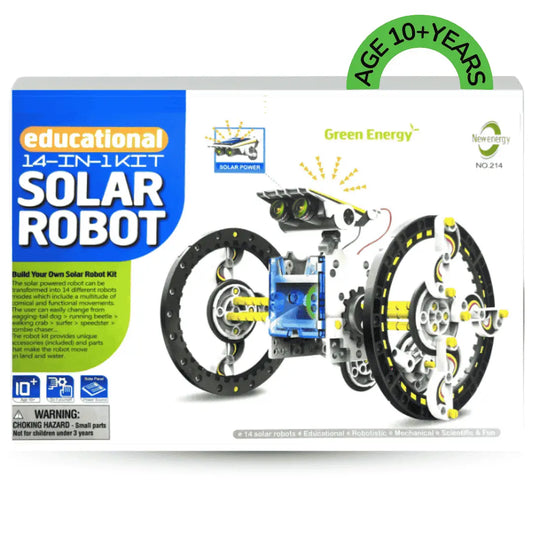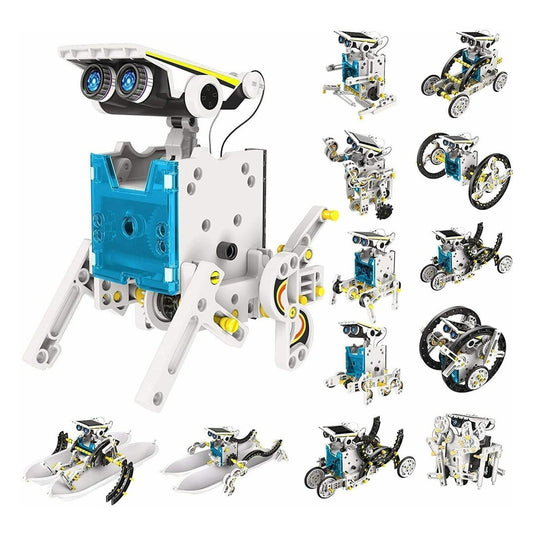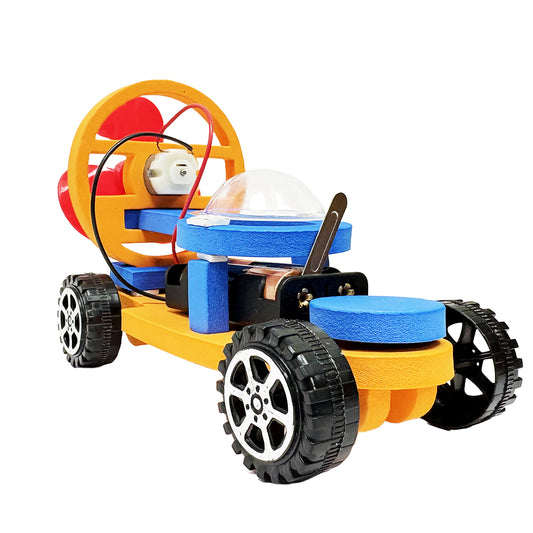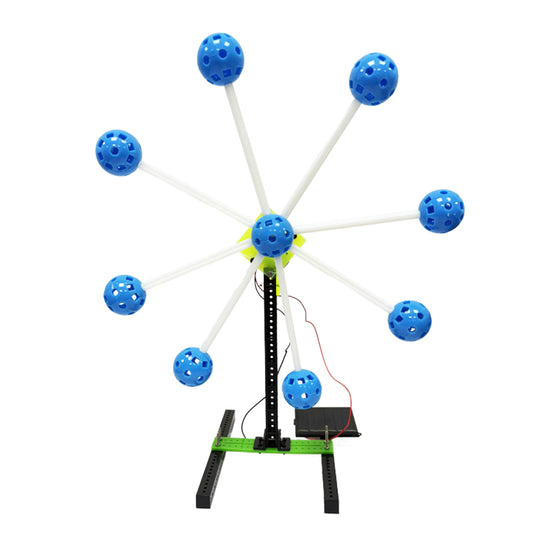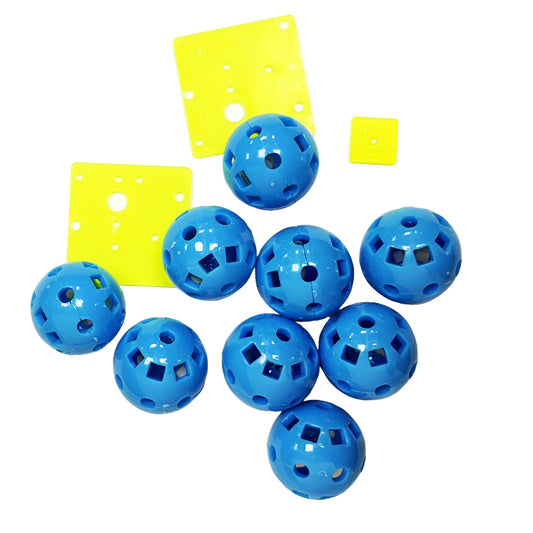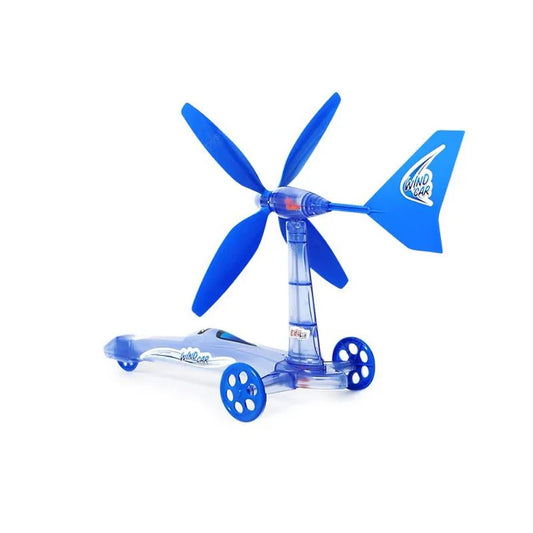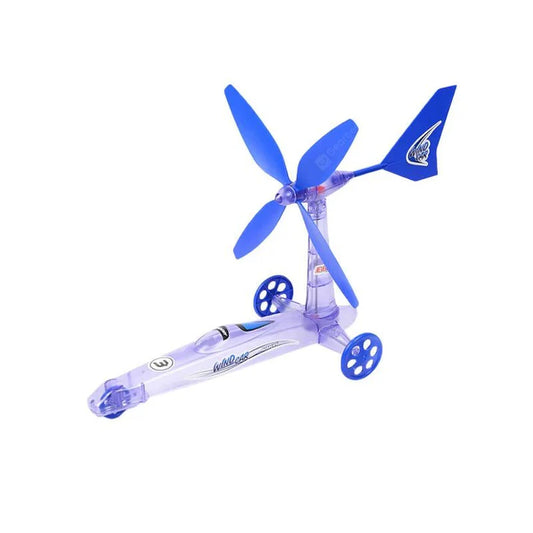
The New Wave of STEM Education: 10 Trends Shaping Your Kids’ Education
IEM RoboticsTable of Content
- Interactive Coding Toys: Learning to Code with Play
- AR and VR Learning Tools: Bringing Learning to Life
- STEM Subscription Boxes: Monthly Learning Surprises
- Social-Emotional Learning (SEL)
- Artificial Intelligence Tools
- 3D Printing: Where Ideas Turn to Reality
- Sustainable STEM Tools: Eco-Friendly Learning
- Personalized Learning App
- Gamification Through Learning
- Metaverse
- Why Should Parents Care About STEM Education?
- Key Elements of a Successful STEM Program
- Conclusion
Do you want your child to remain ahead in this competitive world? Welcome! The future of STEM education is on the rise. There's no better time to introduce such vital subjects to your children now. Moreover, incorporating appropriate STEM tools into your child's daily routine can sharpen their creativity, problem-solving skills, and critical thinking while having a great time! So, how can you make STEM learning both exciting and compelling? This blog will explore the top 10 trends in STEM learning tools for kids. We will examine the innovative technologies, toys, and apps that will keep your child engaged and give practical tips for integrating these tools into your home. Let's get started!
Interactive Coding Toys: Learning to Code with Play
Coding belongs to a more mature age category. However, it shouldn't start there! Indeed, interactive coding toys and activities allow 5-year-olds to start learning some programming by playing. Such kits let kids drag and drop commands or even use easier visual programming languages so the kid can create actions himself.
Why it works: Coding toys help engage children in logical thinking, creativity, and problem-solving skills, essential for success in any field. According to a 2023 survey, 72% of parents believe that coding skills are critical in STEM education for kids.
Tip: Start with toys that teach the basics of coding, such as building simple sequences, and then build up from there as they master each skill. They'll be building crucial tech skills without even realizing it!
AR and VR Learning Tools: Bringing Learning to Life
Imagine your child exploring a 3D model of the human heart. Using Augmented Reality (AR) and Virtual Reality (VR), kids can step into complete world from the comfort of their living rooms! These technologies bring history, science, and art into kids' hands in ways textbooks can only dream about. The research has shown that the AR and VR education market is growing rapidly, with an annual growth rate of 42% by 2026. These tools make STEM education much more engaging and introducing more immersive experience.
Why it works: Kids can actively interact with concepts instead of just reading about them. This hands-on experience enhances retention and understanding, particularly for complex subjects.
Tip: Look for AR/VR toys that allow them to interact with educational content, such as exploring the solar system, learning about animals, or conducting virtual science experiments.
STEM Subscription Boxes: Monthly Learning Surprises
Imagine getting a box full of educational activities at your doorstep every month! That is the magic of STEM subscription boxes, as each box is filled with fun, hands-on projects that inspire kids to experiment with engineering, robotics, and environmental science. According to research, 78% of parents believe STEM subscription boxes are an excellent means for their children to gain new skills outside the classroom. New activities will constantly arrive, and kids will have something fresh to look out for!
Why it works: STEM subscription boxes provide continuous learning opportunities for kids, allowing them to learn and engage with subjects at their own pace while challenging themselves more meaningfully. They also encourage independent work on projects, furthering problem-solving and critical thinking.
Tip: Choose boxes that relate to your child's interests. For example, they may enjoy building machines, solving puzzles, or making art. This will keep them enthusiastic and engaged with their projects.
Social-Emotional Learning (SEL)
Imagine your child working on a challenging STEM project, facing challenges with poise, cooperating with teammates, and voicing their ideas. This demonstrates the essence of Social-Emotional Learning (SEL)—equipping children with technical knowledge, emotional know-how, resilience, and empathy. Incorporating SEL into STEM education helps kids develop technical and interpersonal skills, setting them up for a balanced life.
Research shows that SEL programs significantly improve academic performance and student behavior. A 2019 meta-analysis found that such programs yield an 11 percentile-point gain in educational achievement, indicating their positive impact on learning.
Why it works: SEL equips children with the emotional skills to confront challenges, work well in teams, and think critically—abilities critical to success in any STEM field.
Tip: Look for STEM toys that combine emotional learning with problem-solving. This will help your child develop social skills and technical expertise simultaneously.
Artificial Intelligence Tools
AI has transformed from a buzzword to an essential part of our daily lives. Do you know that kids can understand the concept of AI as early as possible? According to The Journal, “AI solutions can analyze students' past learning experiences, pinpoint areas of weakness, and suggest courses tailored for improvement, thus creating numerous opportunities for a personalized learning journey.”
Artificial Intelligence can give teachers almost immediate feedback on student performance and engagement, as in online classrooms. Moreover, AI can perform repetitive tasks for educators so that they can spend more time with their students. Global Market Insights Inc. has forecasted that the industry will grow at a 40% CAGR through 2027, indicating that Artificial Intelligence is here to stay.
Why it works: AI tools provide personalized learning experiences that adjust to a child's pace, making the educational journey more engaging and less daunting.
Tip: Find interactive AI learning tools where kids can develop and train virtual assistants to help them grasp foundational concepts in a fun, accessible manner.
3D Printing: Where Ideas Turn to Reality
What is more fun than just imagining something? Well, creating it! With 3D printing, kids can bring their imaginative ideas to life by making toys, models, or prototypes of their inventions.
The 3D printing industry is booming, and its use in educational settings to teach children about design, engineering, and spatial awareness is rising.
Why it works: 3D printing encourages creativity and helps kids understand the engineering design process, guiding them from initial concept to final product.
Tip: Look for beginner-friendly 3D printers that are intuitive for kids to understand and use. These printers will allow them to print their designs and run experiments.
Sustainable STEM Tools: Eco-Friendly Learning
Because people continue to raise their awareness concerning climate change and the environment, it is a reality that children are aware of green technologies. This way, sustainable STEM toys make children learn concepts of renewable energy, recycling, and sustainability, among many others, while getting kids into the world of science. According to research, the percentage of parents nowadays who prefer to purchase eco-friendly educational products for their children has reached 54%.
Why it works: These toys can teach children many critical environmental issues. They can also conduct hands-on learning in renewable energy, biology, and earth sciences.
Tip: Find solar-powered kits or crafts made from recycled materials to enjoy with your child while learning about sustainability through fun and practical means.
Personalized Learning App
Imagine an app that will adjust its lessons to fit your child's learning pace, strengths, and areas needing improvement, whether solving math problems or learning to code. Personalized learning apps are changing how children learn by offering customized educational experiences that fit each child's needs. These applications use data to modify lessons, providing challenges that align with their skill levels and learning preferences.
Studies show that personalized learning can increase student engagement and academic success by a significant margin. A 2023 study found that students who used personalized learning tools had a 25% higher retention rate than those who followed traditional learning methods.
Why it works: Customizing the learning experience keeps kids engaged, motivated, and confident as they navigate lessons at their own pace. This makes education feel more attainable and gratifying.
Tip: Look for apps that help your child track their progress, set goals, and recognize achievements. This is a significant motivator in their learning experience.
Gamification Through Learning
Gamification is changing how kids learn by making education feel more like play. Lessons are made interactive by turning them into games that include rewards, points, and levels to motivate children to engage in activities like mathematics, science, and coding. They are no longer restricted to sitting through traditional lessons as they have to solve puzzles and challenges, making learning much more exciting.
A 2024 study determined that gamified learning tools increased student engagement by 68% and boosted knowledge retention by 40% compared to the regular teaching methods. Thus, not only are kids having fun, but they're also remembering more!
Why it works: Gamification appeals to people's love of games and competition, keeping them engaged. It makes challenging subjects seem less overwhelming, and the instant rewards and feedback motivate them to keep going.
Tip: Look for gamified STEM apps or toys that offer levels and rewards. It will motivate your child to tackle new challenges while learning essential skills!
Metaverse
So, how does the Metaverse enhance STEM education? Picture your child stepping into a virtual lab to perform science experiments, journeying through the solar system in 3D, or even constructing engineering projects in a digital space. It brings abstract concepts to life and allows them to experiment safely, free from the usual constraints of a classroom.
Why it works: This immersive approach helps students better understand challenging STEM topics, enhances their problem-solving abilities, and fosters critical thinking. Projections indicate that the Metaverse will reach $12.6 billion in the STEM education sector by 2030.
Tip: Look for Metaverse-based learning tools that enable your child to engage in hands-on STEM activities, such as virtual labs and space adventures. These tools turn lessons into exciting experiences!
Why Should Parents Care About STEM Education?
As a parent, you have a vital role in fostering your child's curiosity and preparing them for the future. STEM education goes beyond just teaching technical skills; it helps children cultivate essential life skills. Here's why STEM education for kids is important:
● Unlocking Potential: In STEM activities, children develop creativity. Whether it's coding a simple program or building a rocket, kids discover hidden talents and interests.
● Boosting Confidence: Completing small or big STEM projects gives kids a sense of accomplishment that translates to other areas, such as academics and social interactions.
● Lifelong Skills: STEM encourages collaborative learning, creativity, and persistence – all invaluable qualities any professional will call upon down the line.
● Making it Fun: Kids love programming robots or devising systems for purifying water as part of science, technology, engineering, and mathematics education, making learning, in general, seem almost fun. No kid wants to be anything if they get bored with what they're doing.
Key Elements of a Successful STEM Program
A well-rounded STEM education program would help students achieve the following skills in critical thinking, problem-solving, and technical competencies by including the following essential components:
● Inquiry-Based Learning
At the heart of STEM education for kids is inquiry-based learning. It requires students to actively question, explore ideas, and experiment to find solutions. Hands-on exploration fosters curiosity and a more in-depth understanding of fundamental concepts, shifting from rote memorization to experiential learning.
● Interdisciplinary Approach
STEM programs highlight the interconnectedness of science, technology, engineering, and mathematics. Lessons are crafted to blend these disciplines, showcasing their interdependence. For instance, students may apply mathematical models to tackle engineering challenges or use scientific principles to create technological innovations, illustrating how these fields intersect in real-world scenarios.
● Real-World Applications
Linking classroom learning to real-life problems increases relevance and engagement. STEM projects often involve social issues, such as developing sustainable buildings, renewable energy sources, or transportation systems. These practical applications will help students understand STEM's influence on their lives and careers.
● Technology Incorporation
Modern technology is integral to STEM education. Student engagement with robotics kits, coding platforms, 3D printers, and simulation software brings hands-on experience with cutting-edge advancement. This makes learning more interactive and enjoyable and equips the students with a technology-driven workforce.
● Teacher Training and Resources
Teachers play an essential role in any STEM program. To teach STEM subjects successfully, they need access to comprehensive training, up-to-date resources, and ongoing professional development. Providing educators with the necessary support ensures that the learning environment flourishes.
Conclusion
STEM education for kids is essential for preparing the child to face future challenges. Science, technology, engineering, and mathematics are introduced to children early by their parents so they can be equipped with skills beyond traditional academics. Tools in STEM learning include interactive coding toys and personalized learning apps that make the educational journey engaging, fun, and meaningful.
This will also develop kids' critical thinking, creativity, and problem-solving skills to deal with real-world problems. Be it augmented reality, 3D printing, or sustainable technologies, all of these experiences encourage innovation and boost their confidence.
Lastly, the focus has shifted from what is STEM education to how it can transform your child's future. Unlock opportunities by embracing STEM education for your children to excel in this increasingly technology-driven society. Start today, and see them blossom!

